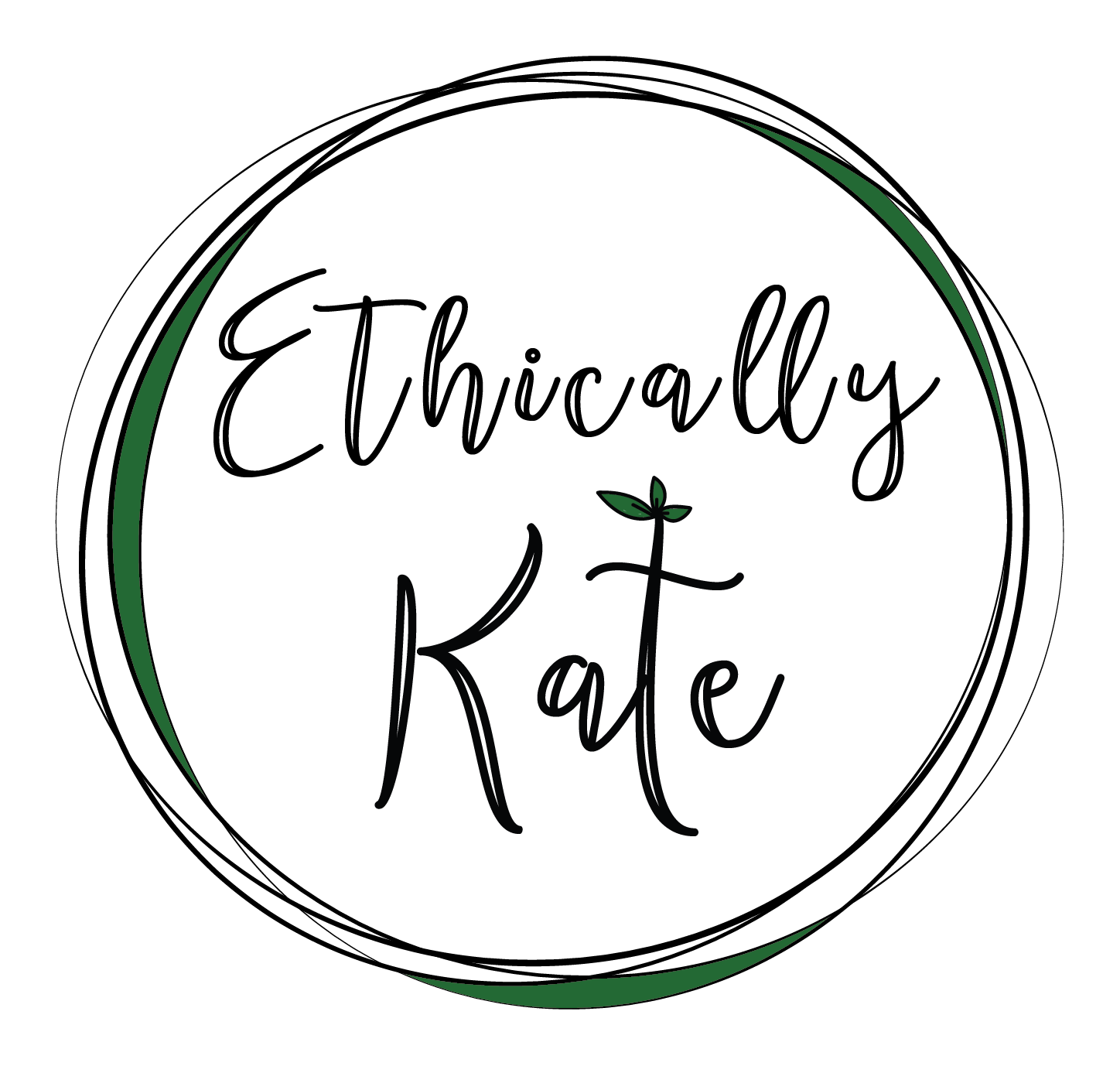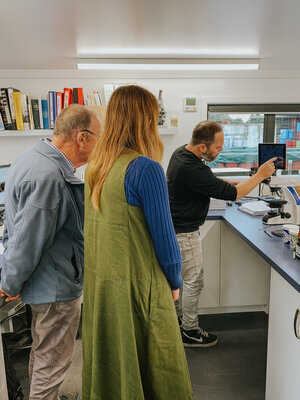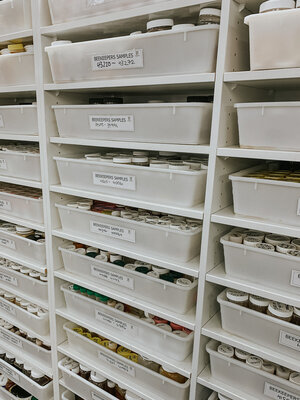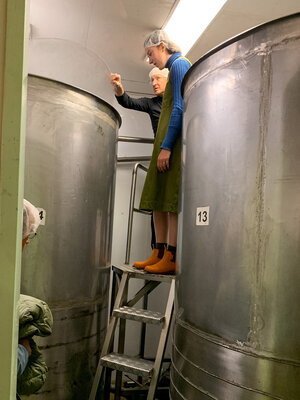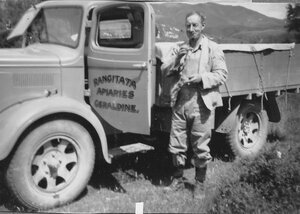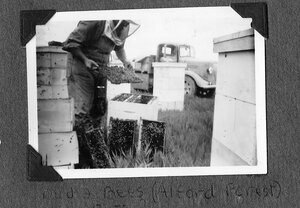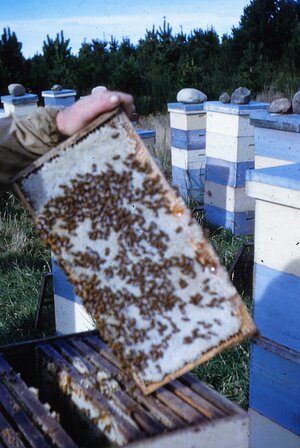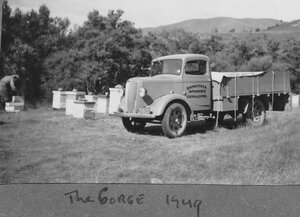My Visit To The Airborne Honey Factory
When my husband, Tim, makes his breakfast, I ask him if he wants some toast with his honey. I think I’m hilarious.
Tim lashes his honey on thoughtfully, treasuring every bite, sometimes even talking about the bees and the honey’s origin - between bites. There is never a shortage of honey in our house; we ALWAYS make sure it’s there. We are honey lovers, and it’s in my blood - my great grandfather was a beekeeper.
Tim and I are privileged enough to prioritise purchasing honey made locally, in a glass jar that we return to be reused, or reuse ourselves. But I realise most people do not have this luxury. It’s certainly a luxury!
With this in mind, when Airborne Honey asked if I’d like to visit their factory, I was thrilled. Airborne are responsible for 25% of the honey on the market in Aotearoa New Zealand, they’re stocked in almost all supermarkets, and have been making honey for 110+ years. Keeping in mind my constant drive to tell people about accessible options for sustainable living, I said “yes”. What a great opportunity to investigate a brand that most people have access to.
So, on my next visit to Christchurch, I invited my grandfather (his father was the beekeeper) and set off on a tour at one of Aotearoa New Zealand’s leading honey factories.
Note: This is a sponsored blog post, but wholeheartedly my own words, opinions, and photos. I would not have said yes to sharing about something that I didn’t feel comfortable with.
The factory was fascinating. It was overwhelming to see how much work goes on behind making one little pot of honey. We met with Matt, the leading scientist and ‘honey investigator’ (termed by me, hah) who tests the honey for all sorts of things. Colour, moisture, glucose, fructose, total pollen, maltose, and HMF are the leading measures tested to ensure what is listed on the label is actually what’s inside.
“The closer you can get it from its natural state, the better the honey will be.”
I’ll be honest; some of the honey chats that went on between my grandfather and the Airborne team went over my head. If you’re a honey connoisseur and/or scientist, I’d recommend browsing the Airborne website for the nitty gritty stuff. But while I didn’t fully understand the science, the key things that stuck with me were how big they were on honesty and traceability. I understand that many honey producers are unable to trace their honey back to a direct source, meaning the sustainability and ethical practices of the workers cannot be determined, monitored, or improved.
This is not the case when it comes to Airborne.
Airborne Honey has three leading principles.
Honest: Whatever is on the label, is in the product.
Undamaged: At Airborne, they have a patented process for liquefying the honey that routinely delivers the lowest amount of heat damage of any honey in the New Zealand market.
Traceable: Their TraceMe software enables Airborne to enter a batch code into the system to show:
• Every apiary (site of bees) that contributed to the batch.
• Every drum of honey in the batch.
• Every analytical outcome for every drum in the batch.
• Exactly where and when it was moved along the way through our process, and who moved it.
You can find all this information by scanning the QR code on each pot. This QR code encourages people to think about where their food comes from, and to appreciate all the steps involved in getting that food to their belly.
I know what you’re thinking… but what about the plastic packaging?
This question was on my mind as I watched the pots of honey move smoothly along the conveyor belt.
Again, I purchase my honey in a glass jar that can be reused/returned/refilled. I personally think refilling is the most sustainable option and I am seeing more and more companies come up with refill options. At the moment, this is not possible for Airborne. They are absolutely aware of it, and continue to seek packaging solutions that are environmentally and economically sustainable.
The packaging conversation is complex, to say the least. Airborne have recently come under a combination of encouragement and scrutiny for releasing this recent article discussing their packaging choices. Everyone is entitled to their opinion, and I can only speak for myself after meeting the team in person and knowing more about how they work behind the scenes.
I personally find confidence in the fact they do not claim to have the most sustainable solution and are open to learning and changing. Most mainstream honey companies are not having this conversation, so they’re avoiding the scrutiny altogether - but avoiding sustainable progression too. I’m seeing other honey brands opt for a paper looking honey container, though when I look more closely, it’s a blend of plastic and paper that cannot be recycled or composted and is made from virgin materials which are ultimately destined for landfill. The paper look is essentially only to help misinformed people feel like they’re doing the right thing. That sucks.
Meanwhile, Airborne are trying. They’re not pretending to be anything they are not, and they are listening to experts and their consumers. That’s the best we can all do, in my opinion.
A few things I like about Airborne’s current packaging :
The labelling clearly states what number plastic the lid and the pot are. This is specified on the label, and also the materials themselves. Too often packaging does not make this clear.
The jars are 70% rPET (recycled), 30% PET. This #1 plastic is accepted by the majority of councils in Aotearoa New Zealand.
Airborne were open to my questions and concerns about things like refilling honey and what to do about the little plastic circle that seals the top of the honey (required at the moment). I have a strong green washing radar, and it didn’t go off.
Moving on from the packaging, my grandfather and I saw the honey production at all stages. 300kg drums, the process of removing the crystals, and of course a delicious taste test at the end. Through conversation, we also realised that my great grandfather would have known the original founder. They were both beekeepers in the same region back in the early 1900s!
Here are some images of my great grandfather, the beekeeper. I thoroughly enjoyed investigating honey and understanding slightly more about what life would have been like for him in his work.
Airborne honey is made by apiaries all over the country. They support many small beekeepers and because of this range of different places and landscapes, they have so many honey flavours! One of my favourites is the vipers bugloss- a flower found in the ‘borage’ family, which is very similar to the blue borage plant currently attracting bees outside my office window.
So, if you make your own honey, if you have access to a friend’s honey, or a local provider- that’s great! Do it! But if you are a supermarket shopper and want to support a business trying their best (and eat delicious honey!), then Airborne is a great option for you.
As a rule, I only work with brands I love, use, and can wholeheartedly back. This is a sponsored blog (I can't pay my electricity bill with free products), but 100% my own words, photos, and opinion.
